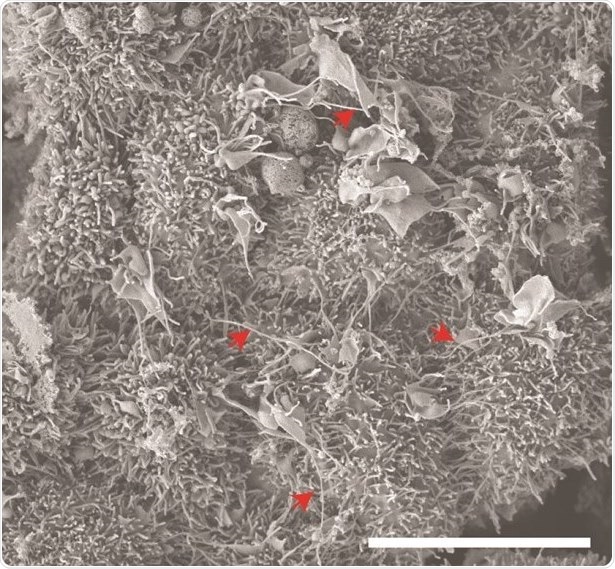Vision loss associated with inherited genetic disease or aging, for example, retinitis pigmentosa (RP) and age-related macular degeneration, respectively, is predicted to affect as many as 16 million people in the world. It is usually caused by defects in the eye’s retinal pigment epithelium (RPE).

Electron microscope image showing RPE treated with Ramoplanin. Image Credit: International Society for Stem Cell Research. Image Credit: International Society for Stem Cell Research.
The RPE plays a key role in removing waste products that emerge during the usual visual process, especially when light meets the photoreceptor cells found in the eye via a process known as phagocytosis.
Failure to remove and recycle such waste products via phagocytosis ultimately results in the death of photoreceptor cells and loss of vision.
In a new study published in the Stem Cell Reports journal, Seba Almedawar and collaborators from the Center for Regenerative Therapies TU Dresden in Germany employed induced pluripotent stem cells (iPSCs). These cells were extracted from the skin of patients with retinitis pigmentosa and of healthy donors to identify drugs that have the ability to improve RPE phagocytosis.
The iPSCs, which can be reprogrammed into any cell type, were changed into RPE cells and subsequently utilized in a high-throughput screen—an automated process that renders it viable to attain large-scale repetition of an experiment—of 1,600 FDA-approved medicines.
Consequently, the team was able to discover many drugs that improved phagocytosis in RPE cultures.
Ramoplanin, the tested antibiotic drug, reduced the phagocytosis defects in RPE from patients afflicted with a specific genetic form of RP. More analyses will be needed to examine if this antibiotic improves phagocytosis in animal models of RP and if it proves to be effective, will be eventually used in human patients.
Further screening of relatively larger libraries may also disclose additional compounds with an ability to treat these disorders that lead to blindness.
Source:
Journal reference:
Schreiter, S., et al. (2020) A Human Retinal Pigment Epithelium-Based Screening Platform Reveals Inducers of Photoreceptor Outer Segments Phagocytosis. Stem Cell Reports. doi.org/10.1016/j.stemcr.2020.10.013.